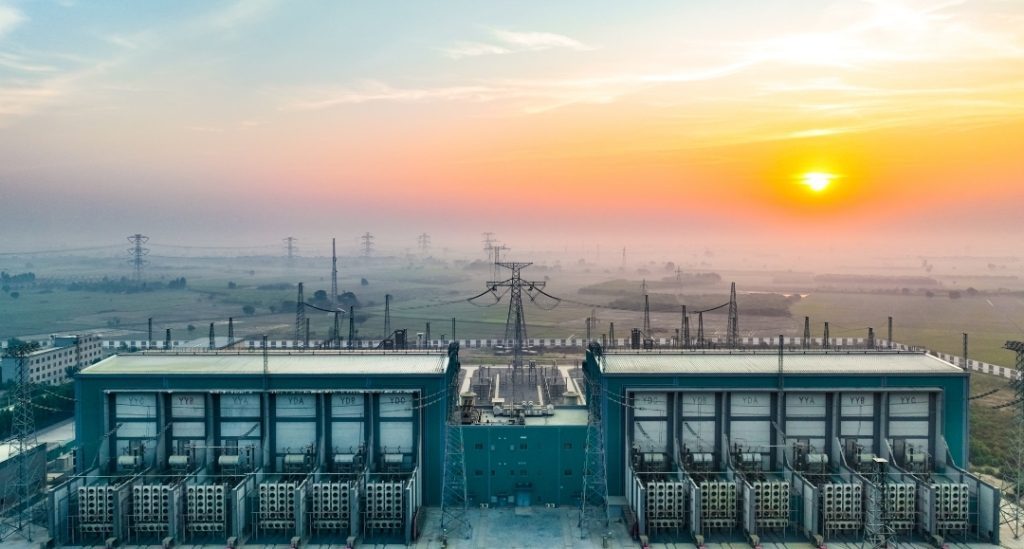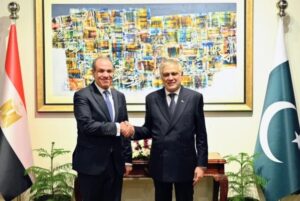PMLTC Emerges as Key Player in Economic Growth through Sustainable Energy Infrastructure in Pakistan

The China-Pakistan Economic Corridor (CPEC), a flagship project of China’s Belt and Road Initiative, emerges as a ray of hope for the nation’s struggling economy. Within this framework, the Pak Matiari-Lahore Transmission Company (PMLTC) stands out as a prime example of how strategic infrastructure projects can catalyze economic growth, create employment opportunities, and address critical energy needs.
About PMLTC:
Pak Matiari-Lahore Transmission Company (PVT) Limited (PMLTC), a subsidiary of CET, was established in Pakistan on October 25, 2015, focusing on the construction of Matiari-Lahore ±660kV HVDC transmission project, which has been widely appraised and supported. China Electric Power Equipment and Technology (Pakistan) Co., Ltd. (CET Pakistan Branch) is a branch set by CET in Pakistan. The branch is responsible for CET’s power transmission and transformation project contracting, power equipment import and export, and power technology consulting and services in Pakistan. It takes charge of signing and implementing the EPC contracts of CET in Pakistan, and is the general contractor of Matiari-Lahore HVDC transmission project in Pakistan.
Energy Conservation and Economic Stability
The PMLTC project is a cornerstone of Pakistan’s energy sector, significantly impacting both energy conservation and economic stability. With its rated power accounting for “17% of the maximum electricity load of the entire grid in Pakistan” and the potential to reach “21% of the electricity consumption,” PMLTC is substantially improving the efficiency of Pakistan’s power grid.
This project’s impact extends to approximately 10 million Pakistani households, providing them with clean and reliable energy. By efficiently transmitting power over long distances, PMLTC minimizes transmission losses, a chronic issue in Pakistan’s aging power infrastructure. This efficiency not only conserves energy but also translates into cost savings for the national economy.
PMLTC’s contribution to economic stability is multifaceted. By ensuring a steady electricity supply, it supports various economic sectors, from manufacturing to services. Moreover, the project enhances Pakistan’s energy security by diversifying energy sources and improving transmission capabilities, creating a more resilient power sector that’s less vulnerable to supply shocks and price fluctuations.
Environmental Stewardship and Sustainable Growth
PMLTC has also emerged as a pioneer in sustainable development within Pakistan’s energy sector. The company’s environmental commitments are underpinned by a robust environmental management system aligned with ISO 14001:2015 standards, driving continuous improvement in environmental performance. PMLTC’s innovative approach is exemplified by its groundbreaking use of drones for wire installation, a first in Pakistan, which significantly reduced construction time and minimized impacts on crops and the environment. This commitment to eco-friendly practices extends to the core of PMLTC’s operations, which can provide 21% of Pakistan’s electricity consumption through low-carbon, green design and planning.
PMLTC’s environmental initiatives extend beyond its core operations. In support of the Pakistani Government’s ambitious 2018 initiative to plant 10 billion trees, PMLTC has actively participated in tree-planting campaigns across various cities and regions. The company has planted over 50,000 trees, including diverse species such as Java plum, morus trees, and palm trees, with 20,000 trees at the Lahore converter station alone. These efforts have not only enhanced local environments but also garnered appreciation from both the community and government. PMLTC’s commitment to biodiversity conservation is further evidenced by routing 60% of power transmission lines through desert areas, protecting productive land.
The company’s flagship project, the “±660 kV HVDC Transmission Line from Matiari to Lahore,” epitomizes green innovation. By September 1, 2022, this project had transmitted approximately 12.7 TWh of DC power, reducing the consumption of about 1.9 million tons of standard coal and curtailing around 5 million tons of carbon dioxide emissions. These achievements underscore PMLTC’s dedication to building a green energy corridor and supporting Pakistan’s goal of 60% clean energy use by 2030.
Job Creation
In a country grappling with high unemployment rates, particularly among its youth, PMLTC’s contribution to job creation cannot be overstated. By the end of 2021, the Matiari-Lahore HVDC transmission project had created 7,000 jobs for Pakistanis during the construction phase and 232 Pakistanis were employed during the operation.” This significant employment generation aligns with the government’s National Employment Policy, which emphasizes the importance of infrastructure projects in job creation.
Moreover, PMLTC’s commitment to local employment is evident in its workforce composition. Currently there are 368 direct employees out of which 299 are Pakistani which make 81% of total employees and this share will increase further. This localization strategy not only provides immediate employment but also facilitates knowledge transfer and skill development among Pakistani professionals.
Conclusion
PMLTC offers a blueprint for sustainable development and international cooperation. The success of this initiative underscores the importance of continued investment in infrastructure and energy projects as a means of fostering economic resilience and creating opportunities for Pakistan’s workforce.


